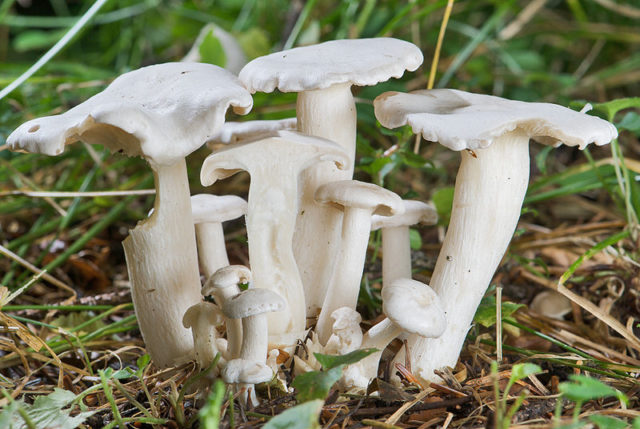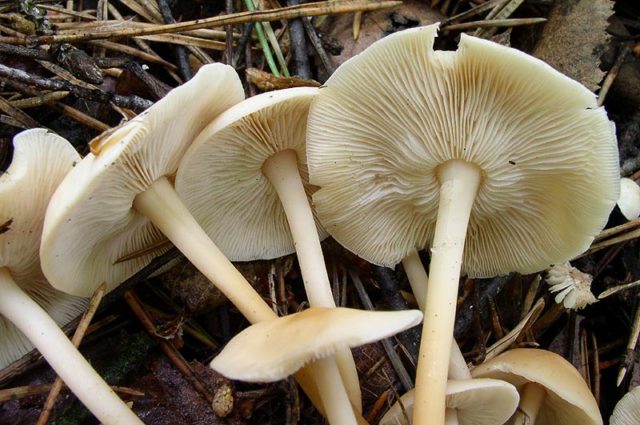Content
The fused row is a common lamellar mushroom of the Tricholomaceae family. Another name is fused lyophillum. It has been entrenched since then, when it was attributed to the genus of the same name. It currently belongs to the Leucocybe, but the name has survived.
Where rows grow together
The coniferous row (Leucocybe connata) is found in coniferous, deciduous and mixed forests. It is not demanding on soil and growing conditions. Loves rare copses, ravine slopes, glade outskirts, forest paths, roadsides, meadows. It can be seen in city parks.
Mushrooms grow together with their legs, forming dense bundles with a common root of several specimens (from 5 to 15) of different sizes. They grow in close groups on the ground and on fallen decaying leaves.
Rowing occurs from mid-September to late October; in good weather, it grows in November.
What do white fused rows look like?
The size of the cap ranges from 3 to 10 cm. In young specimens, it is convex, with rolled edges, pillow-like, smooth, slightly velvety, dry. With growth, it straightens, the edges become wavy, making its shape irregular. The cap is whitish, sometimes with a yellowish or ocher tinge. In humid and rainy weather, it becomes grayish or grayish-olive. The middle is usually darker than the edges. The skin covering the cap is difficult to separate from it. The pulp is hygrophane, that is, when exposed to moisture, it swells and changes color. When dry, concentric zones are formed, spreading from the center to the edges or vice versa.
The plates are white or creamy, yellowish in older specimens. They are quite frequent, narrow, descending or adherent to the peduncle. Spores are white, smooth, with oily drops, elliptical in shape.
The leg grows up to 5-7 cm in height, sometimes up to 12 cm, its thickness is from 0.5 to 2 cm.It can be flattened or cylindrical, thickened at the top, fibrous, stiff, slightly velvety, solid in a young specimen, in an adult - hollow. The color remains white throughout its life. Several mushrooms often grow together at the base, so the legs are often twisted and deformed.
The flesh of the mushroom is dense, white, elastic, with a faint smell, similar to that of a cucumber. The taste is neutral.
This row has several similar types.
Smoky gray lyophyllium is distinguished by an ash or earthy cap covered with small, weakly attached scales. Its pulp has a sour floral scent with pleasant nutty notes. Smoky gray lyophyllium forms aggregates. Refers to conditionally edible.
Colibia is darker in color, does not grow so densely and does not form intergrowths. It is conditionally edible, has low taste.
Lyophyllium carapace has a dark cap (color varies from light brown to almost black). When burned out in the sun, it becomes light. Medium frequency plates. Its leg is whitish or gray-beige, often curved, the surface is mealy. Liffolium armored conditionally edible.
Is it possible to eat rows that have grown together
Some authors call the fused ryadovka poisonous, but nothing is known about cases of poisoning. Many sources mark it as conditionally edible.
Use
Ryadovka refers to conditionally edible, but it is not accepted to eat it because of its bad taste. According to some authors, it can be boiled, fried, baked, salted and pickled, but everyone unanimously claims that it is tasteless and there is no point in collecting it.
Conclusion
The accreted row is distinguished by the fact that it forms dense intergrowths. This phenomenon is not found in any white mushrooms, so it is difficult to confuse it with other similar species.












